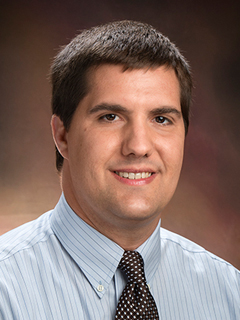HOW CAN WE HELP YOU? Call 1-800-TRY-CHOP
Bosse Laboratory
The cure rate for children with neuroblastoma is unacceptable, making the development of new therapies imperative. The Bosse Lab focuses on discovering and developing new neuroblastoma cell surface immunotherapeutic targets. The lab aims to capitalize on the robust differential expression of these molecules with immune-based therapeutics with a goal to translate new transformative drugs to the clinic and study the underlying biology of these molecules to improve the understanding of the critical biologic mechanisms driving neuroblastoma tumorigenesis.
For example, the lab has discovered that the lineage-restricted oncoprotein, glypican-2 (GPC2), is robustly and selectively expressed on the surface of neuroblastomas and that this molecule is essential to neuroblastoma tumorigenesis. The lab is now focused on defining the underlying biology of neuroblastoma’s dependence on GPC2 and developing immunotherapeutic approaches targeting GPC2, including antibody-drug conjugates and chimeric antigen receptor (CAR) T cells. Furthermore, using its immunotherapeutic target discovery algorithm and validation platform, the lab is also developing additional differentially expressed neuroblastoma cell surface molecules for immune-based therapies. This work is done as part of the St. Baldrick’s Foundation-SU2C Pediatric Cancer Dream Team.
Another project in the lab centers on the serial sequencing of circulating tumor (ctDNA) from neuroblastoma patients to define tumor heterogeneity and clonal evolution while children are receiving both conventional chemoradiotherapies and more targeted therapeutics. The team anticipates these efforts may help define a role for ctDNA profiling in the clinical care of children with neuroblastoma and other pediatric solid tumors and also identify novel mutated driver oncogenes that warrant additional functional validation.
Finally, the laboratory is also interested in defining the functional implications of neuroblastoma-associated germline genetic variation, with a particular interest in describing the role of common and rare genetic variation in the regulation of BARD1 gene expression and splicing and how these alterations collectively contribute to neuroblastoma predisposition.
Project Highlights
- Optimization and development of GPC2 antibody drug conjugates (ADCs) for neuroblastoma and other cancers
- Optimization and development of GPC2-redirected chimeric antigen receptor (CAR) T cells for neuroblastoma and other cancers
- Defining GPC2’s regulation and function in neuroblastoma and other cancers
- Discovery and development of new immunotherapeutic targets for neuroblastoma and other aggressive pediatric cancers
- Defining neuroblastoma evolution by serial profiling of circulating tumor DNA (ctDNA)
- Defining the functional validation of germline variations in BARD1

Kristopher R. Bosse, MD
Assistant Professor of Pediatrics
The cure rate for children with neuroblastoma is unacceptable, making it imperative that new therapies are developed. Dr. Bosse's laboratory is focused on discovering and developing new neuroblastoma cell surface immunotherapeutic targets. Along with his colleagues, Dr. Bosse's aim is to capitalize on the robust differential expression of these molecules with immune-based therapies and also define their mechanisms of overexpression and roles in tumorigenesis.